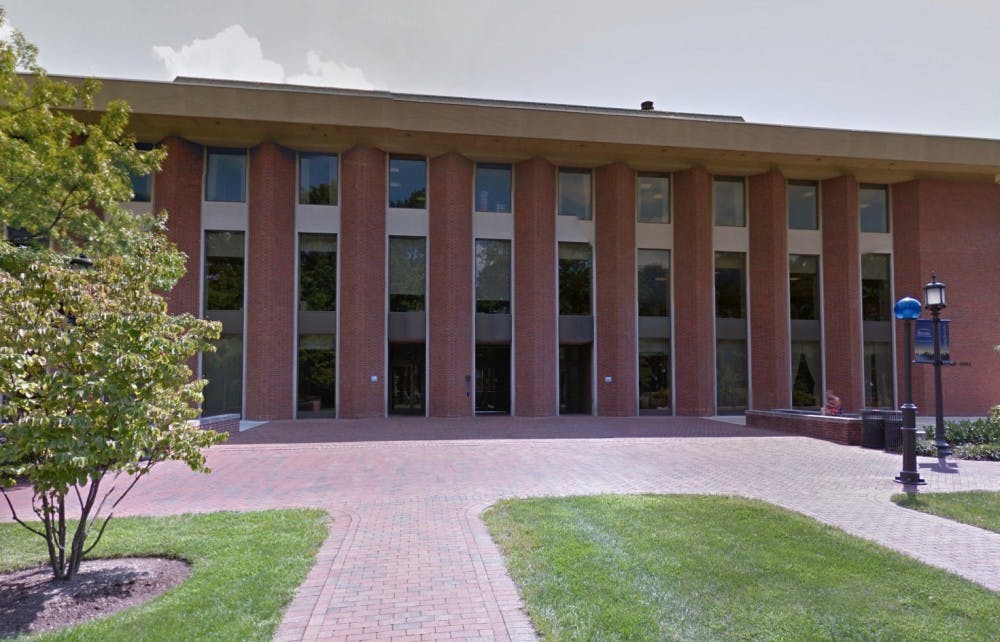Students have been talking about getting a student center on campus since at least 2001, and every couple of years, there’s a renewed push to get one. We are in the middle of one of those pushes now as a confluence of University groups and reports — the Student Government Association’s Referendum, the Second Commission on Undergraduate Education (CUE2), and the Task Force on Student Mental Health and Well-being Final Report — have called for the construction of a student center.
The whole rationale behind getting a student center is to provide a space where students could socialize, get food, find resources — basically all the parts of the student experience that aren’t about school. Supporters argue that a having a large centralized space for non-academic student activities will improve school spirit and community, alleviate academic stress, and make Hopkins more welcoming for undergraduates.
While I am skeptical that a student center alone can fully address these systemic issues, if people insist upon building one, I suggest that they think more carefully about how it’s done.
The current plan is to get a $120 million donation to tear down the Mattin Center and build something new. It’s easy to see why the Mattin Center is so appealing to destroy. Built in 2001, this confusing assortment of barely-used rooftop patio space and dark corridors usually looks empty.
But Mattin is currently home to almost all the arts activities on campus. It houses Swirnow Theater, dance studios, music practice rooms, the Digital Media Center — spaces that students already use to alleviate stress and build school community. The years of destruction, construction and inevitable delays that will come with the student center will severely impair the ability of students to engage in the arts on campus.
How about putting this hypothetical student center somewhere else? Somewhere that’s more centrally located? Somewhere in desperate need of renovation? Somewhere like Garland?
From measuring my wingspan and then awkwardly hugging the building, I estimate that Garland is around 13,747 square feet (note that, based on fire evacuation maps, the basement is bigger). However, it’s hard to tell that Garland is that big given its awful stairwell-to-square-foot ratio and that most of its offices are unrelated to student life.
A good portion of the first floor is reserved for the recently-renovated Office of the General Counsel, home to all the lawyers who glare at you if you stand too close to their windows on the east side of Garland. The central atrium used to be a quiet place to do work before Hopkins installed a guard who asks for every student’s J-Card before they can enter Garland. The Offices of the President and the Provost take up almost all of the second floor. The third floor is crammed with actual student-oriented services like Academic Advising, the Office of International Services, the Career Center and Student Disability Services. The basement has the registrar, employment office, tech center and many, many unlabeled locked doors (I’ve tried them).
Despite what the signs in Garland and the official Hopkins buildings website may disingenuously suggest, the Counseling Center is not in the building, even though placing it in Garland will make it far more accessible for students. The mislabeling of the Counseling Center is indicative of a larger problem on campus where administrative spaces and student resources are scattered across buildings like Levering, Mattin, the Wyman Park Building, Homewood Apartments and of course Garland. Building a student center within Garland offers the opportunity to centralize many student resources and seems cheaper to do than tearing down Mattin and building something else on its corpse.
And while I’m sure that there are hundreds of hardworking administrators in Garland struggling to support the weight of their own bureaucracy, they frankly don’t really need to be in the center of campus. Now that class registration is done online, does the Registrar’s Office need to be there? How about the business office for Homewood Student Affairs? Those grim-looking lawyers from General Counsel? They could all join their fellow administrators in the Keswick building, Wyman Park Building, the San Martin Center or the Eastern Campus, where they also have the perk of avoiding all the pesky student protests that occupy Garland.
The point is, Garland’s first two floors and the basement offer prime real estate for student resources and activities. Consolidating the stairwell space alone will be revolutionary.
The premise of this article may seem ridiculous. I am, after all, advocating to evict President Daniels from his office. But if we’re going to continue talking about a student center as the solution to the many problems students face, consider whether it should be students or administrators who bear the cost of displacement.
Rollin Hu is a senior History major from Boxborough, Mass. He was the former Editor-in-Chief of The News-Letter.





